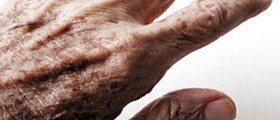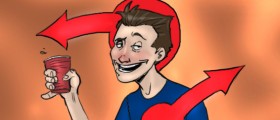
The cerebellum is the part of the brain in charge with motor control as well as some cognitive functions like attention and language. This part of the brain is also important for some emotional functions (pleasure responses). Even though the cerebellum does not actually initiate movement, this part of the brain is important for further actions regarding movement - coordination, precision and accurate timing.
After receiving many signals from other parts of the brain as well as the spinal cord, the cerebellum integrates the signals and provides with fine motor activity. This is the reason why any damage to the cerebellum always leads not to paralysis, but disorders regarding fine movement, coordination, equilibrium, posture and motor learning.
Acute Cerebellar Ataxia
Acute cerebellar ataxia is ataxia originating from the cerebellum i.e. ataxia that develops as a consequence of damage to this part of the brain. The term ataxia refers to a neurological sign characterized by gross lack of coordination of muscle movement.
Acute cerebellar ataxia in children (especially if they are younger than 3 years of age) most commonly develops several weeks after a child has suffered some viral infection. Chickenpox, Coxsackie disease and echovirus infection are some of potential triggers of ataxia in children.
Apart from the mentioned acute cerebellar ataxia may be closely related to intake of alcohol, some medications or even occur after one has been exposed to increased amount of insecticides. Damage to the cerebellum like bleeding into this area, infection or abscess inside the cerebellum or cerebellar stoke are several more potential causes of acute cerebellar ataxia. Finally, the condition may develop in patients suffering from multiple sclerosis.
Acute Cerebellar Ataxia Clinical Characteristics
Problem with movement may affect the middle part of the body (the area from the neck to the hips) or there is difficulty moving extremities.
In such patients the body moves side-to-side while they are sitting. In the same position the body may also move back-to-front. Even the combination of the two is possible. If one tries to reach for some item, the hand usually sways back and forth.
Furthermore, one develops dysarthria (clumsy speech pattern), nystagmus (repetitive eye movements), unsteady gait and uncoordinated eye movements.
Diagnosis and Treatment for Acute Cerebellar Ataxia
Doctors carefully investigate patient's medial history, perform a thorough neurological examination and try to figure out what the underlying cause of the condition may be. Additional help is obtained from CT scan or MRI of the head and spinal tap.
Treatment basically depends on the underlying causes. It can be conservative or surgical.
Finally, the prognosis of acute cerebellar ataxia varies a lot. Full recovery is expected in people who have had a viral infection while stoke, bleeding into the cerebellum or some more complex infections may cause permanent damage to the cerebellum and leave one with different neurological sequelae.
















Your thoughts on this
Loading...